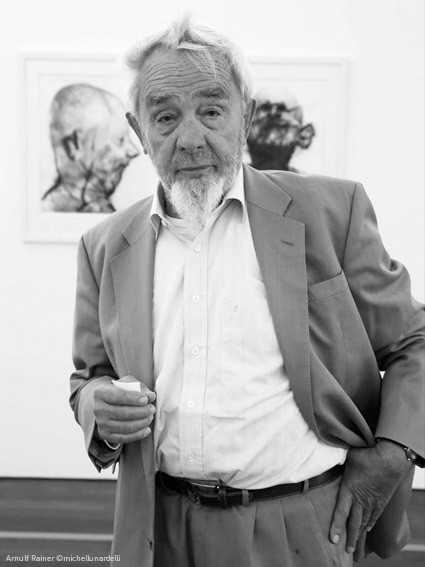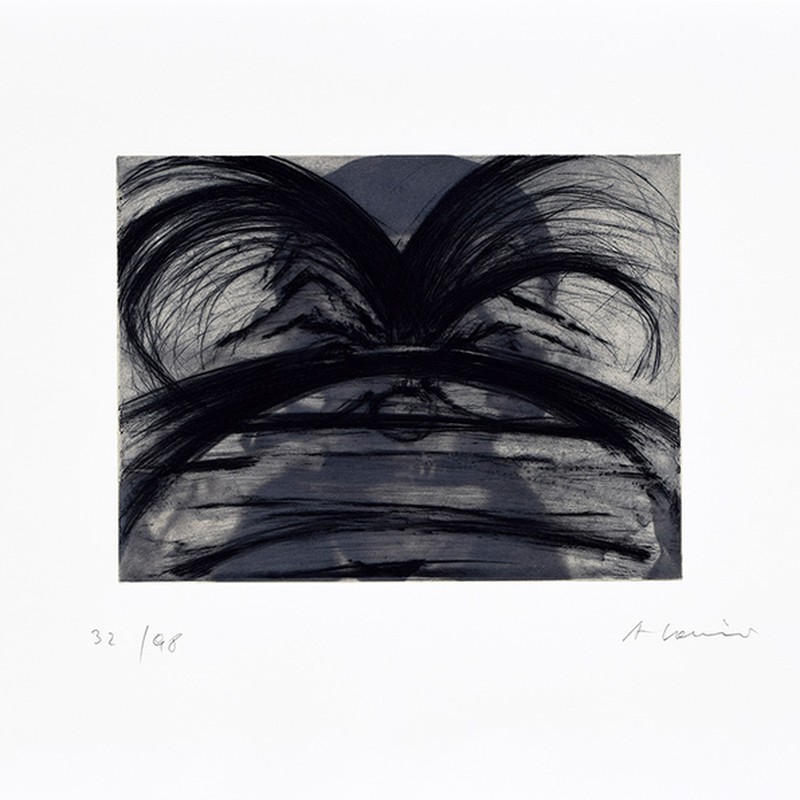
Arnulf Rainer
Painter and printmaker, Austrian Arnulf Rainer was born on 8 December 1929. Strongly influenced by Surrealism in its early days, he is one of the great exponents of contemporary abstraction and informalism.
He began his graphic work in 1950 through lithography and has since produced over 500 works in various techniques, including most predominantly drypoint in clusters of dense abstract and gestural lines. He is also known for imposing such marks on self-portraits in photogravure, scratching the printing plate in a seemingly violent manner in self-negation.
His philosophical inquietudes led him to question rationality and investigate issues such as dreams, madness and the subconscious. He co-founded a surrealist-influenced movement in the 1950s called Hundsgruppe together with Ernst Fuchs, Arik Brauer and Josef Mikl.
After 1954 his style evolved into informal abstract art: the destruction of forms, masks and overlays of illustrations and photographs, dominate his work. He was also linked to "Vienna Actionism", which was characterised by body art and painting under the influence of drugs, artistic experiments in an altered state of consciousness, a theme dear to the Surrealists.
In 1978 he received the Austrian Grand Prize and that same year, as well as 1980, he was Austria's representative at the Venice Biennale.
From 1981 to 1995 he was a professor at the Academy of Fine Arts in Vienna - the same school where he had been and dropped out of his studies after only three days, dissatisfied.
His works have been seen all over the world, passing through the MOMA in New York as well as the Pompidou in Paris. The culmination of his work is presented in the Arnulf Rainer Museum, which opened in New York in 1993.
The artist lives and works in Vienna and Vorbach.
